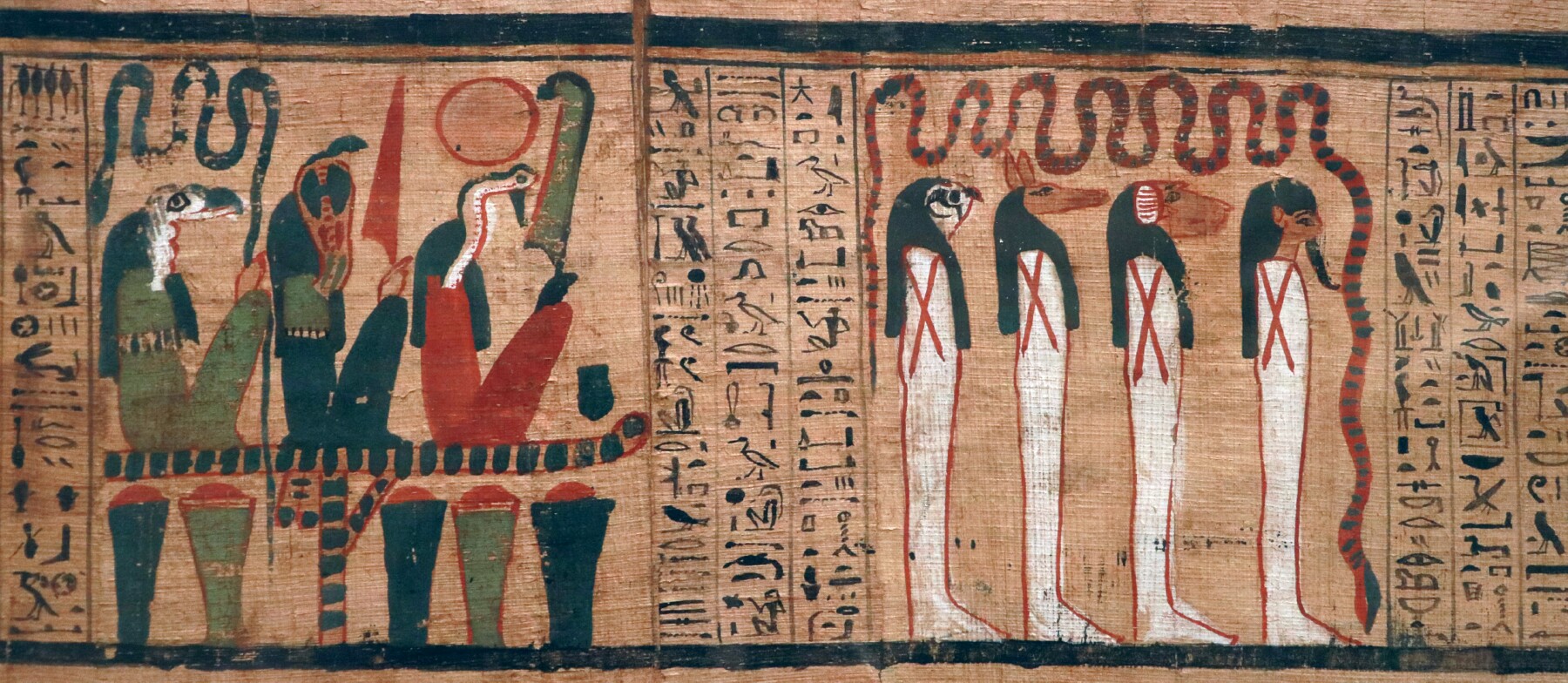
Above: Ancient Papyrus scrolls, featuring gods, royalty and snakes. Snakes symbolized the pharaoh's role as lawmaker and maintainer of order,
protecting the Egyptian people from the forces of chaos.
1 shows the Canopic jars of Kiya, a secondary wife of Pharaoh Akhenaten, wearing a Nubian style wig, inside his tomb, from 1351-1334 BC.
2 shows a lion statue.
3 shows a gold foil from Pharaoh Akhenaten's tomb, which disappeared from the museum 1915-1931, was offered on the Swiss market in the 1970's.
It was restored by the Egyptian Museum in Munich, Germany, shown by them in 2001, and after negotiations, returned to the Egyptian Museum.
4 is an example of a stele, or Egyptian headstone or monument.
5 the Egyptian bird god Horus, the son of the gods Isis and Osiris, protects the Pharaoah.
6 shows the gilded burial mask of Yuya, a prominent courtier whose daughter, Tiye, became the Great Royal Wife of Pharaoh Amenhotep III.
7 and 8 show ancient wigs.
9 shows a ceremonial chair found in the tomb of Pharaoh Tutankhamun, 1336-1327 BC, with images of the god Aten that his father instituted, but then
Tutankhamun returned the god Amun to favoured status. His tomb was found in the Valley of the Kings in 1922, almost totally intact.
10 and 11 show Tutankhamun's gilded wooden throne, with lion heads at the front, winged cobras on the armrests, papyrus and lotus stalks
represeting Egyptian unity. The scene shows Tutankhamun lounging on his throne, while Ankhsenamun brings him a beverage or possibly perfume.
|
|